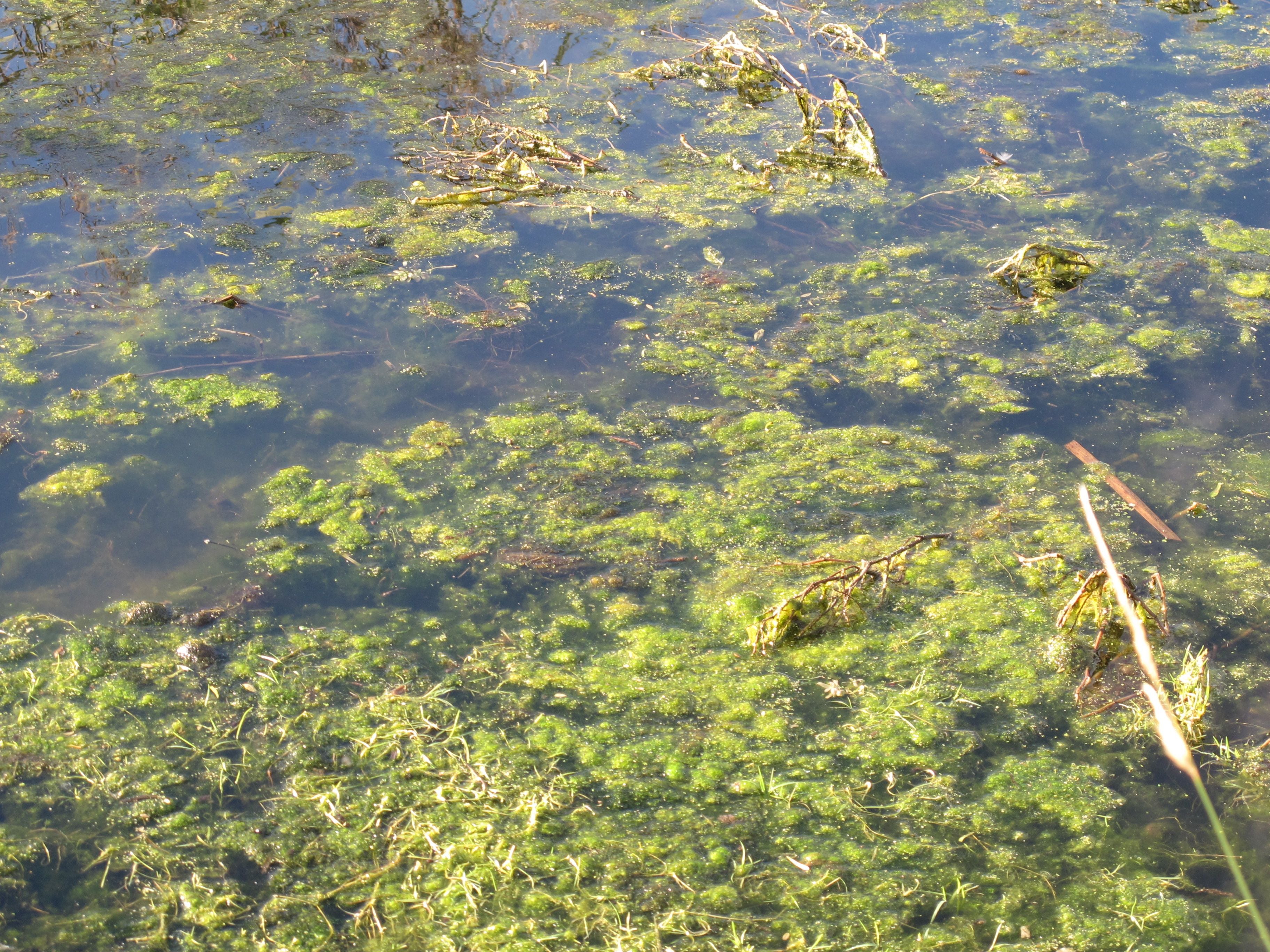Algae
Introduction
Otherwise described as blue green algae, pond algae, green algae, filamentous algae, blanket weed or cyanobacteria; this is a common problem with waterbodies during the summer months for landowners.
Cyanobacteria are a phylum of bacteria that obtain their energy through photosynthesis. They are arguably the most successful group of microorganisms on earth.
Identification
Typically, in the early spring, single-celled species can be seen which colour the water green. If a jam jar is filled with a sample from the water, single cells of algae can be seen suspended in the water. As the season progresses other filamentous species are able to grow. These form thin strands that conglomerate and can form a dense mat on the surface of the water body.
Problem
Commonly pond algae is a problem during summer months as the temperature of the water in ponds and water bodies increases due to increased daylight hours and nitrogen and phosphates are widely available. This can cause a problem because it discolours the water and can lead to dense mats floating on the surface of the water. Discoloured water is an aesthetic issue, but when blue-green algae reach bloom densities, they can actually reduce light penetration, which can adversely affect other aquatic organisms both directly (e.g., other phytoplankton and aquatic plants) and indirectly (e.g., zooplankton and fish that depend on phytoplankton and plants). When a blue-green algae bloom dies off, the blue-green algae cells sink and are broken down by microbes. This breakdown process requires oxygen and can create a biological oxygen demand. Increases in biological oxygen demand result in decreases in oxygen concentration in the water, and this can adversely affect fish and other aquatic life, and can even result in fish kills.
Cultural & Biological Control
If you are creating a new pond, reduce the amount of daylight that it receives by locating it with at least part of the pond in slight shade, plant up at least one third of the surface with aquatic plants, while ensuring there are also sufficient submerged oxygenators. Select native species that are not invasive. Ideally there should be a minimum pool depth of 75cm (2.5ft) to prevent water warming up rapidly in sunshine, which speeds up algal growth.
There are currently no approved herbicides that can be used for the control of algae however a number of different products which utilise natural biological principles are available. These tie up nutrients with the production of bacteria at the direct cost to algae.
AlgaphiteBio contains naturally occurring bacteria which consume and degrade the excess nitrogen and phosphates that algae feed on to develop. Because it does not directly kill the algae, AlgaphiteBio should ideally be used as a preventive tool, and added in the spring, before the algae begin to grow strongly. For best effect it should be applied at regular intervals throughout the spring and summer months to ensure that there are sufficient nutrient consuming bacteria to continue controlling the levels of phosphates and nitrates in the water, reducing the ability of algae to grow. It can still be used under algal bloom conditions, but may take some weeks to bring the bloom under control, as the algal cells expire. AlgaphiteBio is available in 200g sachets for the treatment of larger ponds and lakes (> 50 m3) or in a liquid formulation for ponds and lakes with a smaller surface area (< 50 m3).
Use Cloverleaf Blanket Answer for spot treatment of specific areas. Blanket Answer Aquatic Weed Control is a unique blend of minerals and enzymes to combat blanket weed. It is safe for fish and desirable aquatic plants.
Blanket Answer Aquatic Weed Control is simply added to the pond by pouring the mixed powder and pond water from a designated watering can evenly over the surface. The pond will initially take on a milky appearance, but this will clear after about 5 days.

